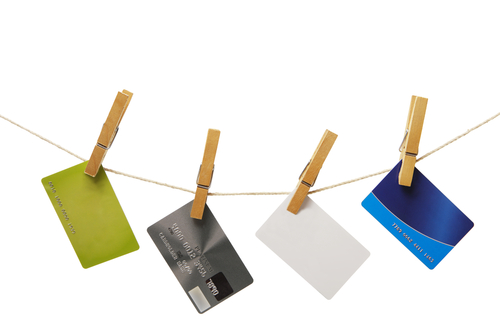If you find yourself knee deep in credit card debt, bankruptcy might seem like the only alternative. It’s a way to reorganize or eliminate debts and start anew. But the consequences of a bankruptcy don’t fade as quickly as your debts. A bankruptcy remains on your credit report for up to 10 years and can reduce your credit score by as much as 200 points.
Fortunately, there are less damaging ways to get out of credit card debt. Let bankruptcy be your last resort and consider other effective ways to eliminate high balances.
Stop charging. Your plan to get out of credit card debt will fail if you continue to use your credit card. Do whatever it takes to eliminate this temptation. Slash credit cards in half, freeze them, shred them or ask a trusted relative to hide them from you.
Pay more than the minimum. Minimum payments reduce credit card balances by a very small percentage. For a noticeable decrease in your balance, pay an amount that’s higher than your minimum. If your creditor asks for $25 a month, up your payments to $50 or $75.
Ask for a lower interest rate. If you’ve always paid your credit card statements on time, call your creditor and ask for a lower interest rate. Creditors typically reward long-term and reliable customers with a cheaper rate, but you have to ask. A lower rate decreases how much you owe in interest each month, wherein more of your payment goes toward paying down your principal.
Transfer your balance to a low-rate card. Some creditors are stubborn and do not reduce interest rates. If you can’t negotiate a better rate with your current card company, start shopping for a new credit card. Several credit cards offer low-rate balance transfers to people with a good credit history. In many cases, you can secure 0% interest for the first 12 to 18 months. With no interest payments, you can pay down your balances and get out of credit card debt faster.
Work with a debt management company. Getting out of credit card debt may require professional help. Speak with a non-profit debt management company to see if you’re eligible for their program. If so, the debt management company assumes responsibility for the repayment of your debt. They consolidate your debts into one bill and negotiate a better rate with your creditors. You send the company one payment each month. The debt management company then spreads your payment among your various creditors.
Get a part-time job. The more income you bring in, the faster you can get rid of your credit card debt. It’s no surprise that people with disposable income can generally pay down balances faster. Check into part-time jobs that you can work in the evenings or on the weekends. Consider this: an additional $125 a week equals an additional $500 a month. Apply this full amount to your debt and you can pay down a $5,000 credit card balance in roughly 10 months.
If you find yourself knee deep in credit card debt, bankruptcy might seem like the only alternative. It’s a way to reorganize or eliminate debts and start anew. But the consequences of a bankruptcy don’t fade as quickly as your debts. A bankruptcy remains on your credit report for up to 10 years and can reduce your credit score by as much as 200 points.
Fortunately, there are less damaging ways to get out of credit card debt. Let bankruptcy be your last resort and consider other effective ways to eliminate high balances.
Stop charging. Your plan to get out of credit card debt will fail if you continue to use your credit card. Do whatever it takes to eliminate this temptation. Slash credit cards in half, freeze them, shred them or ask a trusted relative to hide them from you.
Pay more than the minimum. Minimum payments reduce credit card balances by a very small percentage. For a noticeable decrease in your balance, pay an amount that’s higher than your minimum. If your creditor asks for $25 a month, up your payments to $50 or $75.
Ask for a lower interest rate. If you’ve always paid your credit card statements on time, call your creditor and ask for a lower interest rate. Creditors typically reward long-term and reliable customers with a cheaper rate, but you have to ask. A lower rate decreases how much you owe in interest each month, wherein more of your payment goes toward paying down your principal.
Transfer your balance to a low-rate card. Some creditors are stubborn and do not reduce interest rates. If you can’t negotiate a better rate with your current card company, start shopping for a new credit card. Several credit cards offer low-rate balance transfers to people with a good credit history. In many cases, you can secure 0% interest for the first 12 to 18 months. With no interest payments, you can pay down your balances and get out of credit card debt faster.
Work with a debt management company. Getting out of credit card debt may require professional help. Speak with a non-profit debt management company to see if you’re eligible for their program. If so, the debt management company assumes responsibility for the repayment of your debt. They consolidate your debts into one bill and negotiate a better rate with your creditors. You send the company one payment each month. The debt management company then spreads your payment among your various creditors.
Get a part-time job. The more income you bring in, the faster you can get rid of your credit card debt. It’s no surprise that people with disposable income can generally pay down balances faster. Check into part-time jobs that you can work in the evenings or on the weekends. Consider this: an additional $125 a week equals an additional $500 a month. Apply this full amount to your debt and you can pay down a $5,000 credit card balance in roughly 10 months.







